We’ve all heard reports about the brain drain many nations around the world are experiencing, with qualified grads choosing to work in places that can offer more freedom, better pay, and an overall higher standard of living than their home countries. Yet college grads and professionals in our own country are also driven by these forces, and as a result, many parts of the U.S. are being hit pretty hard by brain drain.
Within the U.S., there are several types of brain drain that are at play, with varying levels of severity. Some brain drain may be caused by too many grads from top schools (the nation’s best and brightest, one would assume) heading to Wall Street, instead of helping push forward science and technology. Brain drain in the U.S. may also be caused by making if difficult, if not impossible, for brilliant students from abroad to get residency, doing the country a disservice in the long run by driving out businesses and entrepreneurs who will take their ideas and money elsewhere instead. But perhaps the most prevalent type of brain drain is driven by the same factors that make intelligent, young professionals everywhere in the world move from one place to another: money, resources, and opportunities. Some states can offer these in spades, while others are struggling to hold on to recent college grads and long-term professionals alike. Read on to see just how brain drain is affecting these places much closer to home.
- Michigan
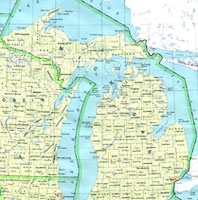 Michigan is a state that has been struggling for decades. Once an economic powerhouse with a thriving automotive industry, many areas of the state are now abandoned, impoverished, or on the decline. This becomes even more evident when you take a look at the amount of brain drain the state is undergoing. Between 2000 and 2009, the state lost 6.17% of its population with college degrees, a loss that is undoubtedly tied with the hard times its automotive industry is facing, and the most of any state. Education as a whole isn’t flourishing either, as test scores in reading and math for young students are falling (and in some cases falling faster than almost anywhere else). Despite having some solid colleges in the state, Michigan also sends more students out-of-state than it gets back, with a net loss of almost 1,100 students every year. With faltering industry and few high-education industries in the state, Michigan could see more job losses, professional migration, and economic woes in the future.
Michigan is a state that has been struggling for decades. Once an economic powerhouse with a thriving automotive industry, many areas of the state are now abandoned, impoverished, or on the decline. This becomes even more evident when you take a look at the amount of brain drain the state is undergoing. Between 2000 and 2009, the state lost 6.17% of its population with college degrees, a loss that is undoubtedly tied with the hard times its automotive industry is facing, and the most of any state. Education as a whole isn’t flourishing either, as test scores in reading and math for young students are falling (and in some cases falling faster than almost anywhere else). Despite having some solid colleges in the state, Michigan also sends more students out-of-state than it gets back, with a net loss of almost 1,100 students every year. With faltering industry and few high-education industries in the state, Michigan could see more job losses, professional migration, and economic woes in the future. - Colorado
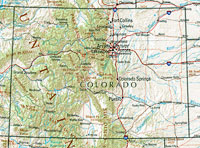 Colorado may be home to beautiful landscapes and fun outdoor activities, but that doesn’t seem to be enough to hold on to qualified professionals. In fact, the state has been experiencing some serious brain drain over the past few years. While Colorado may have a fairly highly-educated population overall (it holds the second-highest number of bachelor’s degrees per adult in the U.S.), the jobs market just doesn’t match up. The state has had big drops in the number of white-collar workers per capita, and many are drawing connections to the state’s faltering education system that has had major drops in test scores and graduation rates in recent years. Statewide budget cuts in everything from parks and recreation to education have also promoted many college-educated professionals to look outside of the state for work, a troubling trend that may make Colorado a much less desirable destination for educated workers.
Colorado may be home to beautiful landscapes and fun outdoor activities, but that doesn’t seem to be enough to hold on to qualified professionals. In fact, the state has been experiencing some serious brain drain over the past few years. While Colorado may have a fairly highly-educated population overall (it holds the second-highest number of bachelor’s degrees per adult in the U.S.), the jobs market just doesn’t match up. The state has had big drops in the number of white-collar workers per capita, and many are drawing connections to the state’s faltering education system that has had major drops in test scores and graduation rates in recent years. Statewide budget cuts in everything from parks and recreation to education have also promoted many college-educated professionals to look outside of the state for work, a troubling trend that may make Colorado a much less desirable destination for educated workers. - Oklahoma
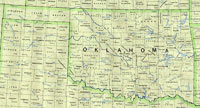 Education in Oklahoma may be behind much of the brain drain. Students aren’t performing as well as those in other states on tests, and there have been few increases in the number of residents with undergraduate and advanced degrees in recent years. Overall, the state has one of the lowest levels of college-educated residents anywhere in the U.S., ranking 42nd in the nation, and even those few holding bachelor’s degrees are heading elsewhere to find work. The state hasn’t been ignoring its problem, however, and a new initiative called Project 1000 is asking a thousand of the state’s companies to hire just one extra college graduate than they expected to hire, hopefully holding more educated students in the state.
Education in Oklahoma may be behind much of the brain drain. Students aren’t performing as well as those in other states on tests, and there have been few increases in the number of residents with undergraduate and advanced degrees in recent years. Overall, the state has one of the lowest levels of college-educated residents anywhere in the U.S., ranking 42nd in the nation, and even those few holding bachelor’s degrees are heading elsewhere to find work. The state hasn’t been ignoring its problem, however, and a new initiative called Project 1000 is asking a thousand of the state’s companies to hire just one extra college graduate than they expected to hire, hopefully holding more educated students in the state. - Idaho
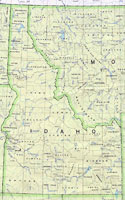 Brain drain isn’t a new problem in Idaho. Take a look at old newspapers, like this from 1987, to see just how big of a deal it was then, almost 25 years ago. At the time, the legislature was debating offering businesses tax credits and breaks in order to draw more white-collar work into the state. Something must have gone off the rails somewhere along the lines with those plans, however, because the state is still wrestling with many of the same issues today. Between 2000 and 2009, the state’s number of high school graduates decreased 1.71%, which doesn’t sound that bad until you consider that the drop is one of the largest in the nation, with only two other states having a worse decline. Over the same time period, the state has also seen one of the worst drops in the number of college graduates with bachelor’s and advanced degrees, and many who do graduate choose to work outside of the faltering state.
Brain drain isn’t a new problem in Idaho. Take a look at old newspapers, like this from 1987, to see just how big of a deal it was then, almost 25 years ago. At the time, the legislature was debating offering businesses tax credits and breaks in order to draw more white-collar work into the state. Something must have gone off the rails somewhere along the lines with those plans, however, because the state is still wrestling with many of the same issues today. Between 2000 and 2009, the state’s number of high school graduates decreased 1.71%, which doesn’t sound that bad until you consider that the drop is one of the largest in the nation, with only two other states having a worse decline. Over the same time period, the state has also seen one of the worst drops in the number of college graduates with bachelor’s and advanced degrees, and many who do graduate choose to work outside of the faltering state. - Alaska
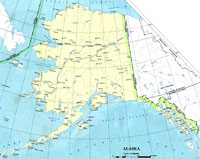 Alaska is facing some serious brain drain due to some big educational declines over the past decade. The graduate rate for the state has fallen on virtually every front, with lower levels of students coming out of high school, bachelor’s programs, and grad school with degrees. Overall, it has seen some of the biggest drops in graduation rates of anywhere in the U.S., according to a study of census data conducted by MainStreet. Many who are college educated within Alaska may simply not be finding the job opportunities they need, as the state has one of the lowest percentages of residents with white-collar careers in the U.S. — just 10.5%. To battle this brain drain, the state is considering offering loan forgiveness programs to college grads who come back to the state to work, with greater benefits the longer they stay.
Alaska is facing some serious brain drain due to some big educational declines over the past decade. The graduate rate for the state has fallen on virtually every front, with lower levels of students coming out of high school, bachelor’s programs, and grad school with degrees. Overall, it has seen some of the biggest drops in graduation rates of anywhere in the U.S., according to a study of census data conducted by MainStreet. Many who are college educated within Alaska may simply not be finding the job opportunities they need, as the state has one of the lowest percentages of residents with white-collar careers in the U.S. — just 10.5%. To battle this brain drain, the state is considering offering loan forgiveness programs to college grads who come back to the state to work, with greater benefits the longer they stay. - Arizona
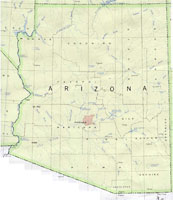 Arizona has been in the news quite a bit over the past few years, and unfortunately not always for good reasons. Battles over immigration and violence against a congresswoman are only part of Arizona’s problems, however. The state has seen high school graduation rates drop, fewer residents getting bachelor’s and higher degrees, and a drop in the percentage of residents with white-collar jobs. Between 2000 and 2009, Arizona lost 3% of its population with careers that require post-secondary education, the sixth-worst drop in the nation. Things aren’t looking good, but many within the state aren’t giving up just yet, creating programs designed to help draw more science and technology business to the state, encourage students to attend college, and build enthusiasm about education in a wide range of communities.
Arizona has been in the news quite a bit over the past few years, and unfortunately not always for good reasons. Battles over immigration and violence against a congresswoman are only part of Arizona’s problems, however. The state has seen high school graduation rates drop, fewer residents getting bachelor’s and higher degrees, and a drop in the percentage of residents with white-collar jobs. Between 2000 and 2009, Arizona lost 3% of its population with careers that require post-secondary education, the sixth-worst drop in the nation. Things aren’t looking good, but many within the state aren’t giving up just yet, creating programs designed to help draw more science and technology business to the state, encourage students to attend college, and build enthusiasm about education in a wide range of communities. - Wyoming
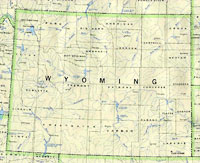 Wyoming isn’t faring so well when it comes to educating and keeping college students in its state. In 2000, the state had one of the highest percentages of high school graduates, but since then the numbers have fallen significantly, a decline that is the second worst in the nation. College graduation rates, naturally, are also down. While it might take some time to fully recover, the state is fighting brain drain through new scholarship programs offered at its in-state schools. Smart students can get serious discounts at Wyoming colleges, sometimes even a free ride, through a scholarship program aimed at keeping the best and the brightest in the state. So far, the program seems to be working when it comes to attracting new students; enrollments are up 13% this year. Of course, there’s still a long way to go, as the state also needs to build up professional opportunities and white-collar jobs within the state before any long-term progress toward plugging the brain drain can be made.
Wyoming isn’t faring so well when it comes to educating and keeping college students in its state. In 2000, the state had one of the highest percentages of high school graduates, but since then the numbers have fallen significantly, a decline that is the second worst in the nation. College graduation rates, naturally, are also down. While it might take some time to fully recover, the state is fighting brain drain through new scholarship programs offered at its in-state schools. Smart students can get serious discounts at Wyoming colleges, sometimes even a free ride, through a scholarship program aimed at keeping the best and the brightest in the state. So far, the program seems to be working when it comes to attracting new students; enrollments are up 13% this year. Of course, there’s still a long way to go, as the state also needs to build up professional opportunities and white-collar jobs within the state before any long-term progress toward plugging the brain drain can be made. - Iowa
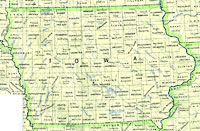 Iowa’s education system isn’t doing well, ranking 49th in math scores nationwide and reading scores dropping precipitously between 2000 and 2009. While the state does have a fair amount of residents with college degrees, many young people are still driven to move out of the state en masse. Fair or unfair, Iowa doesn’t have a reputation for offering loads of opportunities for cultural or professional development. Legislators have realized this may be playing a role in the brain drain they’re trying to fight against and have created the Generation Iowa Commission, composed of young people throughout the state, to tap directly into the 18-to-35 demographic to see what would keep them in the state. Time will tell if this effort will help to stem the tide, as the state has already lost about 4% of its young professional workforce since 2000.
Iowa’s education system isn’t doing well, ranking 49th in math scores nationwide and reading scores dropping precipitously between 2000 and 2009. While the state does have a fair amount of residents with college degrees, many young people are still driven to move out of the state en masse. Fair or unfair, Iowa doesn’t have a reputation for offering loads of opportunities for cultural or professional development. Legislators have realized this may be playing a role in the brain drain they’re trying to fight against and have created the Generation Iowa Commission, composed of young people throughout the state, to tap directly into the 18-to-35 demographic to see what would keep them in the state. Time will tell if this effort will help to stem the tide, as the state has already lost about 4% of its young professional workforce since 2000.
No comments:
Post a Comment